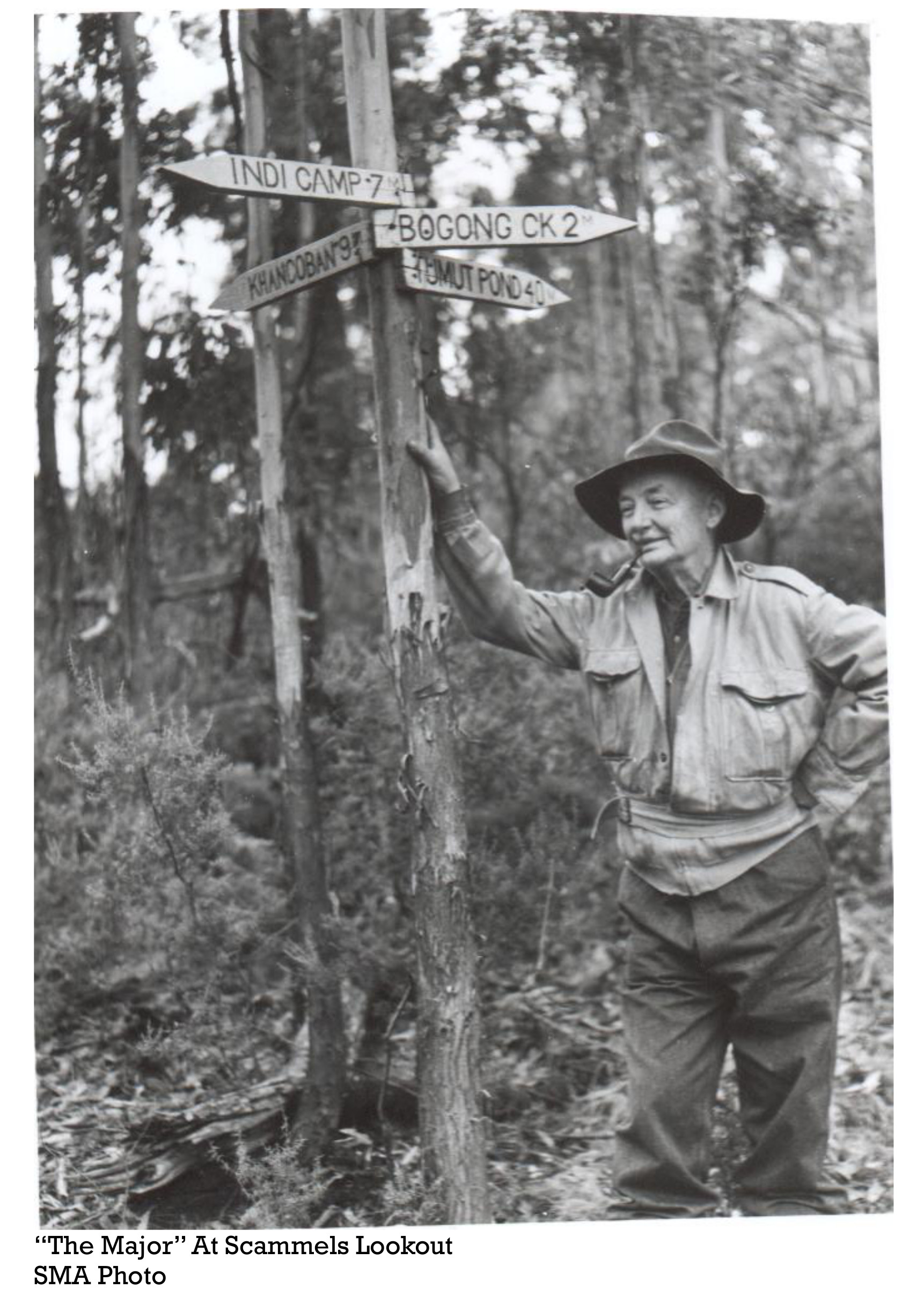The attachment is a fascinating portrait Major Clews,written by Noel Gough.
Major Clews was in charge of surveying the Snowy from 1950 to 1958.
Major Clews Hut is still standing, and in excellent condition.
Hugh Powel Gough Clews - The Major
The Major was born in England on December 25, 1890 at Rotherham, South Yorkshire, England, the son of William Henry Clews, restaurateur, and his wife Helen Powell, (nee Gough).
After a basic education, Hugh, aged 18, undertook a two-year surveyors apprenticeship. He was articled, at a cost to his parents of thirty pounds, to John Bourne, an elderly and somewhat conservative surveyor in Parkgate near Rotherham.
After two years and, with hindsight, considered his master a poor choice. Except for a bit of dumpy levelling and chain survey of proposed road alterations, using a Gunter chain and tape measures, he had little experience of survey, but considerable insight into road maintenance, control of house building, etc..
Late in his articles he joined the English Survey Association as a pupil but after leaving, lost touch with them during the next few years. He stayed on a few months after completing his articles but doesnt recollect receiving any payment for his services.
At 5ft 6¼in. (168.3cm),the Major was considered too short for the Royal Engineers, so he enlisted in the 2nd Battalion, Sherwood Foresters on 7th July 1909.
On 10 January 1918 The Major married Alice May Reeves with Anglican Rites at the Holy Trinity Church, Balaclava, Melbourne, before embarking for England on 2nd February 1918 on the Wiltshire sailed for Australia on 8th May 1919 aboard the Devanha disembarking in Sydney on 23rd June 1919.
He was discharged from the AIF on 16th July 1919 and was re-engaged the following day into the Australian Survey Company. Survey work took The Major to many different locations throughout Australia including Strathfield, Katoomba, Newnes Junction, Wollemi, Newcastle, Kyogle, Childers, Ingham, Fraser Island, Chatswood and Kosciuszko.
In June 1944 he reluctantly gave up fieldwork for staff duties in Sydney. He first visited the Snowy Mountains area in 1948 surveying for the original Technical Investigation Committee. Placed on the Retired List on 29 July 1949 as an honorary Lieutenant Colonel, he established a home in the bush at Bell in the Blue Mountains NSW.
Then, aged 60, he accepted a very attractive offer of a five-year contract to work for the Snowy Mountains Authority as Senior Surveyor. This offer was made by his old army colleague Bert Eggeling, Chief Surveyor, Snowy Mountains Authority.
The Major was to achieve legendary status not only with his former colleagues but also with highly skilled refugees and displaced persons. Intent on creating in the Australian bush a new world achievement to offset and salve the horrors of war-torn Europe many of these German, Czech, Latvian, Polish, Yugoslav and Hungarian surveyors, chainmen and foresters were to have unique, often startling, assimilation experiences as they matched themselves against this wiry old man and real leader whom some said Was of the mountains.
A man of action, white-haired under a battered ex-Army hat, his walking feats and reconnaissance surveys anticipated roads, hydrologists, surveyors, blasting teams and death defying tunnellers. Clewsie wished only for a simple life but for eight strenuous years he was always one of the first men in, always miles from anywhere. Guthega, Geehi, Lobbs Hole, Dry Dam, Kings Cross, Kennys Knob, Three Mile, Tumut Pond, Indi, Scammels Spur and Cowombat Flat have become familiar to Australians because of The Major. His love of this type of work and his remarkable bushmanship, Clewsie, right hand upon the Scammels Lookout signpost amongst the eucalypts says it all.
To The Major belongs, uniquely, eight years of investigatory work that established him staunchly and affectionately in the hearts of the staff of the Snowy Mountains Authority.
The Major retired on 11th February 1958, aged 67 to a forty-acre (16.2 Ha) tree covered lease at Indi between Corryong and Khancoban under the shadow of Kosciuszko. Clewsie built himself a small cottage, a two roomed cottage of rammed earth pise, planted ornamental trees; cultivated prize geraniums, pelargoniums, dahlias and roses and encouraged tame birds and kangaroos to share his retreat. Eccentric but not reclusive he knew Kipling almost by heart, loved Sibelius, read his Illustrated London News and quietly drank his Lowndes Rum and Schweppes Dry.
He followed with particular interest debates on Strzelecki and Kosciuszko and contributed a carefully written Strzeleckis Ascent of Mount Kosciusko 1840 (1970) published by The Australia Felix Literary Club, Melbourne. His close friends included the esteemed Paddy Pallin.
It was during this second retirement that Clewsie became a regular visitor to the Army School of Survey at nearby Bonegilla attending many functions there - a living legend to the younger members of the Corps. The Clews Bowl a magnificent Indonesian silver punch bowl donated to the Army by the Major is a prime piece of mess silver at the School of Military Engineering, Moorebank.
By 1978 arthritis in the knees forced The Major into a caravan at Khancoban where friends kept a watchful eye on him until, eventually, his son Harold transferred him to Frankston.
He died quietly on 22 August 1980. His ashes were spread around the memorial cairn adjacent to his cottage.



